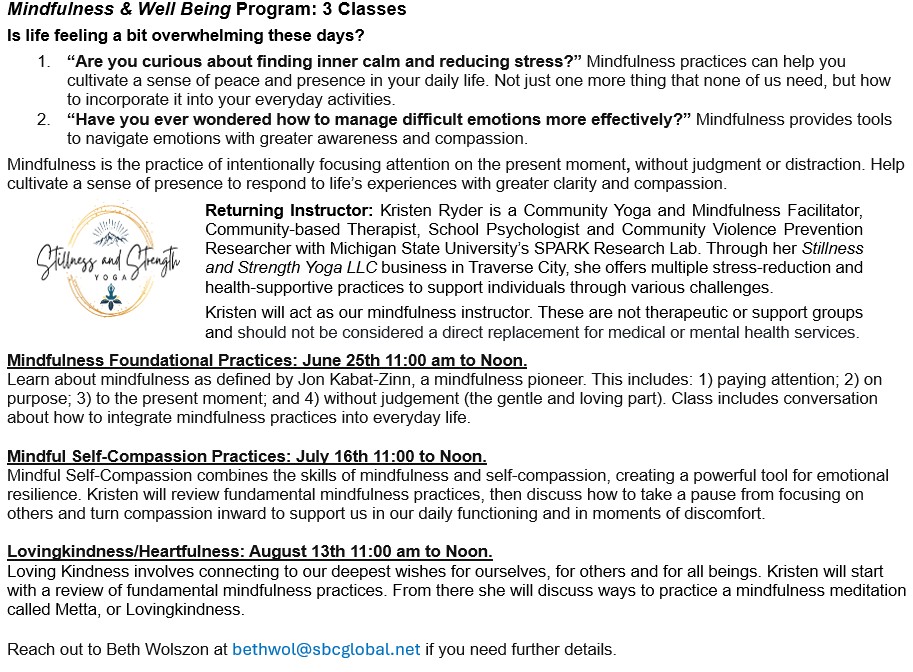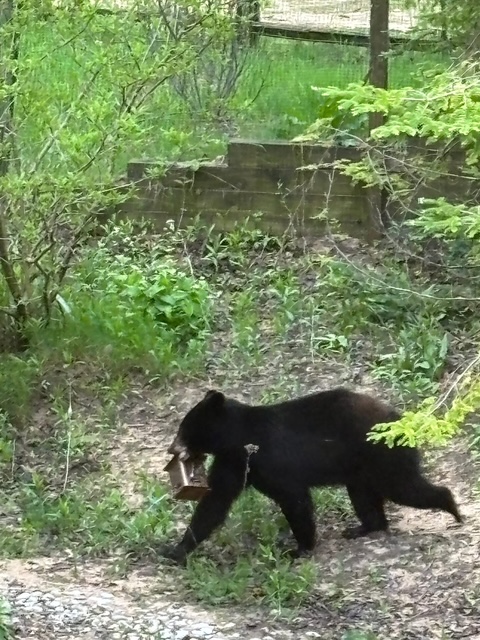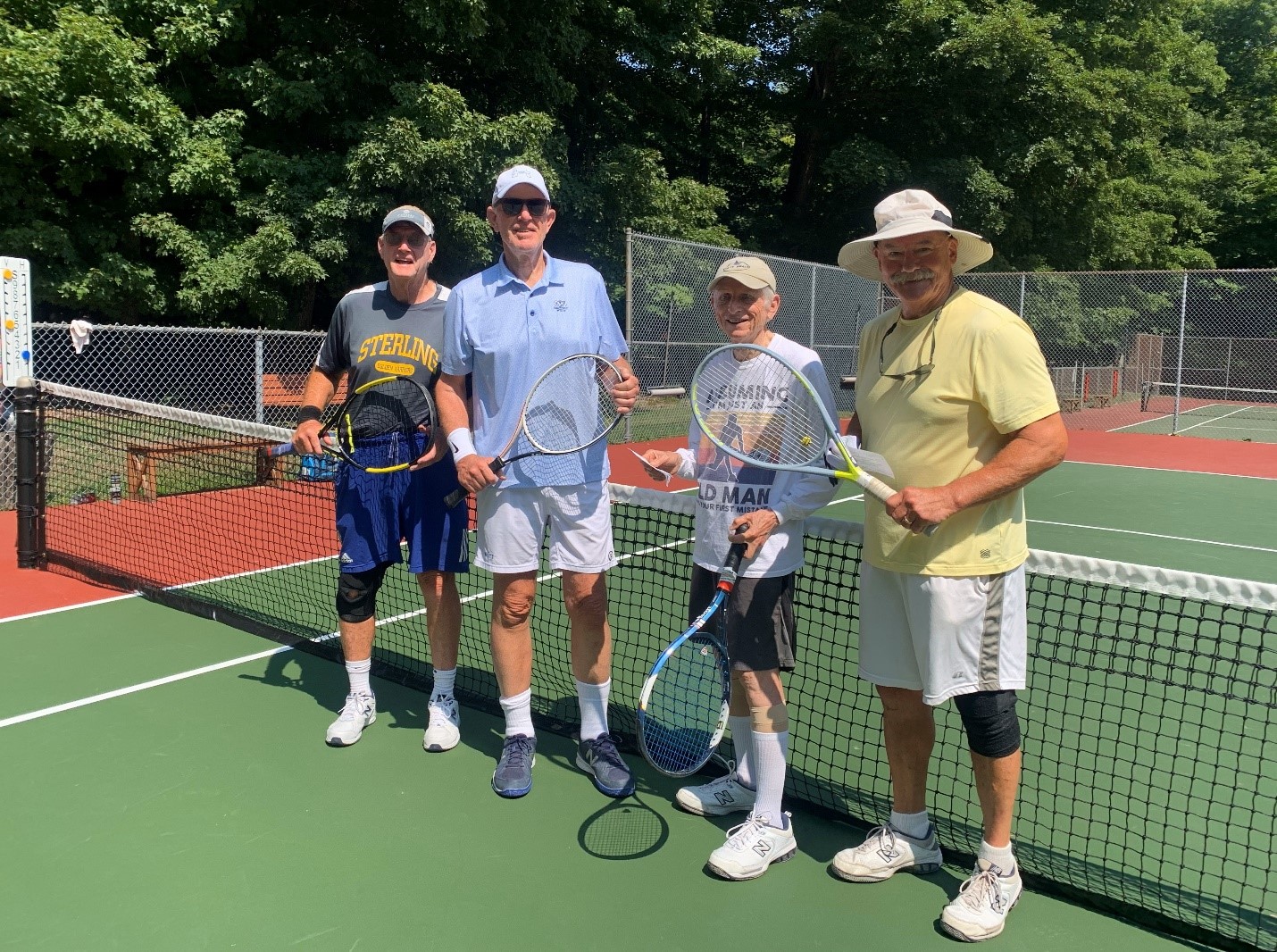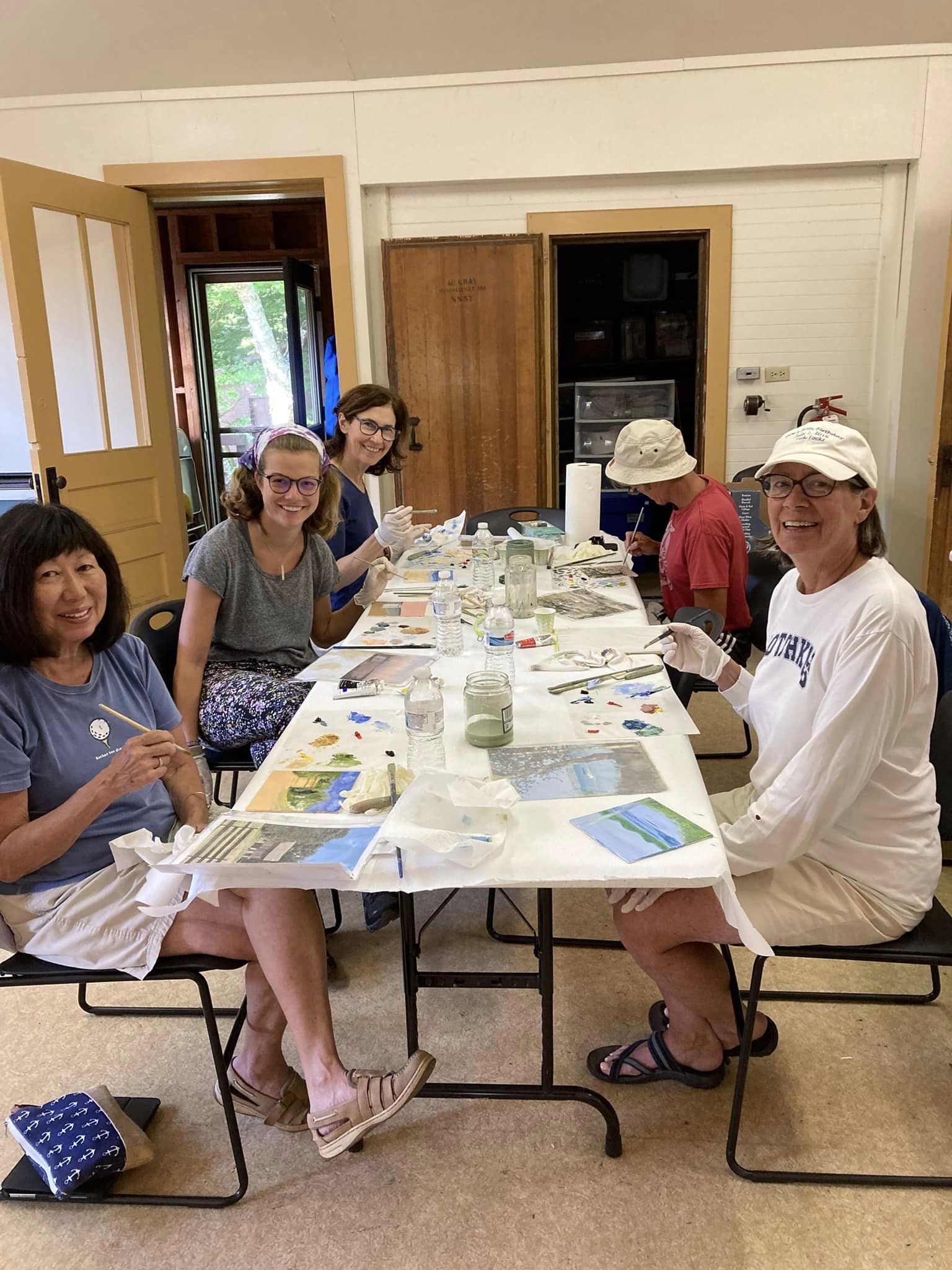Mindfulness & Well Being 2025 Summer Program

 SummerAssembly123.
Congregational Summer Assembly
SummerAssembly123.
Congregational Summer Assembly

 This mama bear and her cubs were spotted recently at a home on Ness Rd.
This mama bear and her cubs were spotted recently at a home on Ness Rd. Lunch! pay attention to our surroundings. Leave your earbuds and music behind, put away your screen, and walk, listen and watch your way through the splendid natural wonders around you.
Lunch! pay attention to our surroundings. Leave your earbuds and music behind, put away your screen, and walk, listen and watch your way through the splendid natural wonders around you. Alan Marble, Tennis Committee Cochair, is pictured on right after the Senior Men’s Doubles Final match in the August 2023 tournament.Steve, of course, ran the CSA tennis program for years and, lucky for us, he came back two years ago. “Denny approached Steve in January of 2022 and he expressed a sincere desire to run the CSA program once again,” said Alan Marble. “We cobbled together an aggressive budget proposal, got the support of the Board of Trustees and the new (amazing) managing director, and the program set records for attendance in 2022. We asked for an additional $6K for the 2023 budget, all towards salaries, and we got it.”
Alan Marble, Tennis Committee Cochair, is pictured on right after the Senior Men’s Doubles Final match in the August 2023 tournament.Steve, of course, ran the CSA tennis program for years and, lucky for us, he came back two years ago. “Denny approached Steve in January of 2022 and he expressed a sincere desire to run the CSA program once again,” said Alan Marble. “We cobbled together an aggressive budget proposal, got the support of the Board of Trustees and the new (amazing) managing director, and the program set records for attendance in 2022. We asked for an additional $6K for the 2023 budget, all towards salaries, and we got it.”CSA MEMBERSHIP COMMITTEE
By Ginanne Brownell - August 10, 2023
For many CSA members—old and new—the CSA’s Membership Committee has always been something of a mystery. But according to Ann Murphy Burroughs, who co-chairs the committee with Megan Royle Carrella, it isn’t purposely that way. They have made concerted efforts to explain exactly how CSA membership has worked in the past and how it works now in the annual Assembly News and on the CSA website. Ann, who has been on the committee for almost 30 years, says it’s believed the committee was formed when the CSA, “stopped offering anyone who came to the desk the opportunity to purchase a ticket, and the category of Associate Members was created.” For a number of decades, the committee met routinely once a week during the season, but with leadership change and the pandemic, they have adopted both virtual and in-person meeting formats and meet a few times during the season.
From its inception and continuing today, the committee established policies and procedures for membership and ticket purchase eligibility as approved by the Board of Trustees and lot owners. Over the years, as family stays reduced from 8-10 weeks to 1-2 weeks a summer, and families sometimes missed CSA seasons entirely due to various societal factors, membership definitions and ticket purchase eligibility policies evolved.
At various times the CSA Board has discussed ways to generate more income, especially early in the season. Consequently, the Membership Committee has discussed how policies might accommodate ticket sales in the “shoulder” seasons – early June and late August – and what programming or services might be offered at those times.
In terms of what the committee does beyond policies and procedures, part of their work is reviewing incoming Associate Member applications, keeping track of lot owners and Associate Members, and determining who is eligible to purchase a ticket and vote at annual meetings. An applicant for membership or associate membership needs to provide evidence of a lengthy past association. “We also work to make membership policies broadly communicated and understood [and] consider larger issues such as making new members feel welcome, how membership policies impact crowding and car traffic at the CSA, and how membership policies might be adjusted in the future,” Ann says.
She points out that like all CSA committees, the committee’s job is to stay on top of all current issues at the CSA as well as to think about how things might evolve going forward, and draft recommendations to the Board as needed. “At times we have consulted with Waterfront regarding capacities for boats and people on the Crystal Lake beach, with CSA Staff regarding which programs and activities can welcome the general public, with new office staff on the intricacies of membership policies related to ticket purchase, with the Women’s Association on welcoming new members, and with Bylaws related to membership,” Ann adds.
The Committee has also taken on new roles when needed, for example when it was decided that all Associate Members would be invoiced in the spring for the equivalent of a two-week ticket. At that time the Membership Committee took on the work of preparing those invoices and mailing them out for over a decade. Nowadays, this is done by paid CSA staff. Also, in the past, when membership policies had outlived their relevancy and were failing to address “certain situations based on general demographic and constituent lifestyle shifts” Ann says the membership committee has reviewed these policies and suggested amendments to the Board.
In terms of challenges, Ann says one of the biggest ones they face is that “our membership policies have grown to be incredibly detailed and complex, and it is very hard for the general CSA member to get a handle on how membership operates.” However, she says that this is nothing new: similar situations have occurred in the late 1990s/early 2000s. That led to a lengthy study by the Membership Committee that included open forum discussions, a board recommendation, a CSA lot-owner vote, and new policies adopted in 2007. She added that since that’s now been almost two decades, “we again welcome ideas and discussion on membership policies from CSA participants, especially regarding potential ways to simplify membership policies.” Open forums and community discussions have always played a critical role for many perspectives to be heard as the Membership Committee considers future options.
While at present the Membership Committee is fully staffed, they welcome anyone interested in attending their meetings. Ann says what is so enjoyable about the Membership Committee is the chance to work, “with a dedicated, multi-generational group to consider how past and present CSA community constituents were/are defined, and how our community would like to welcome constituents in the future.” She encourages anyone to
 n a rich place for painters, actors, singers, musicians, composers, photographers, and writers who not only pursue these endeavors in the summer months but professionally as well.
n a rich place for painters, actors, singers, musicians, composers, photographers, and writers who not only pursue these endeavors in the summer months but professionally as well.